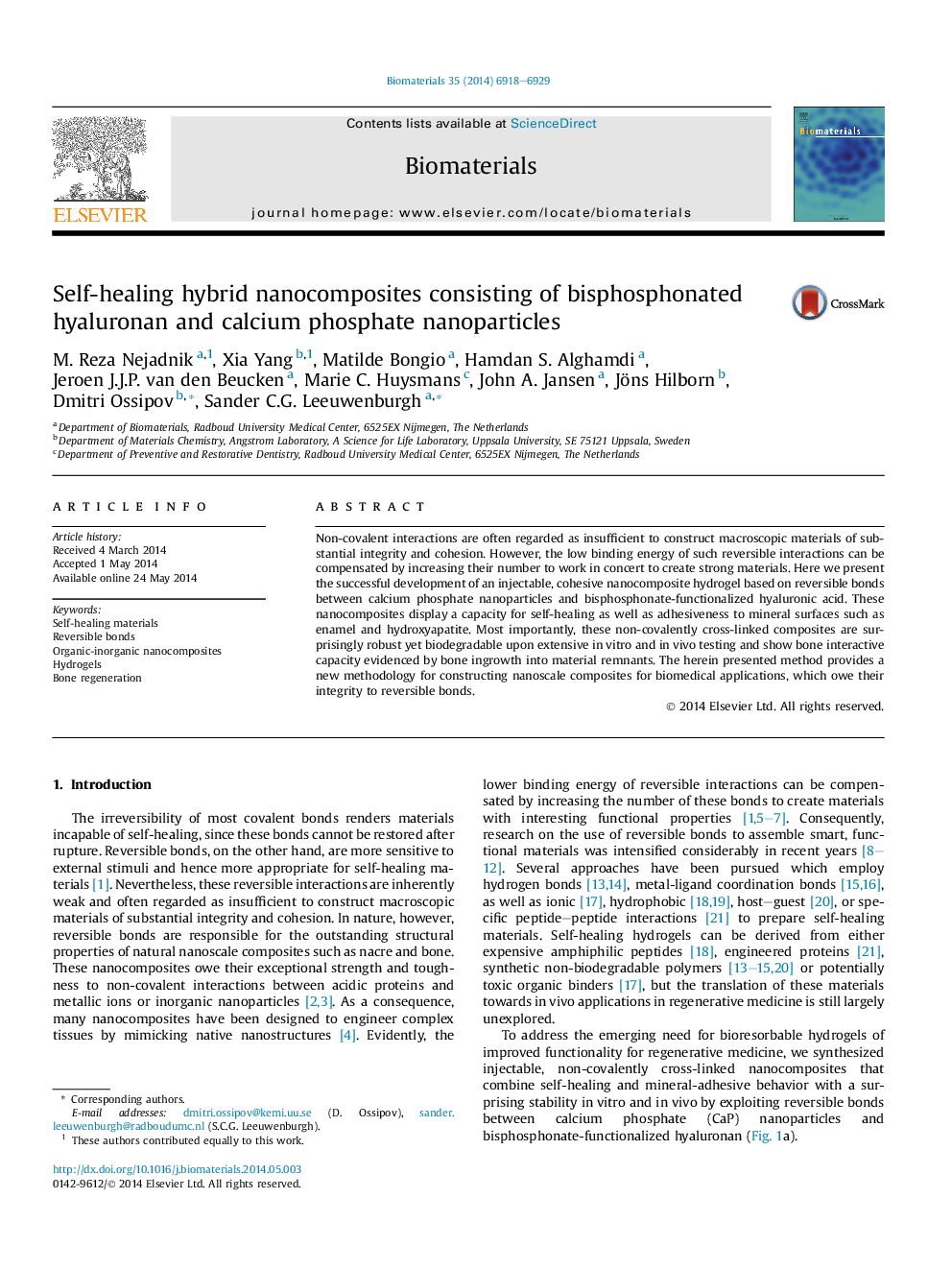| Article ID | Journal | Published Year | Pages | File Type |
|---|---|---|---|---|
| 10227533 | Biomaterials | 2014 | 12 Pages |
Abstract
Non-covalent interactions are often regarded as insufficient to construct macroscopic materials of substantial integrity and cohesion. However, the low binding energy of such reversible interactions can be compensated by increasing their number to work in concert to create strong materials. Here we present the successful development of an injectable, cohesive nanocomposite hydrogel based on reversible bonds between calcium phosphate nanoparticles and bisphosphonate-functionalized hyaluronic acid. These nanocomposites display a capacity for self-healing as well as adhesiveness to mineral surfaces such as enamel and hydroxyapatite. Most importantly, these non-covalently cross-linked composites are surprisingly robust yet biodegradable upon extensive in vitro and in vivo testing and show bone interactive capacity evidenced by bone ingrowth into material remnants. The herein presented method provides a new methodology for constructing nanoscale composites for biomedical applications, which owe their integrity to reversible bonds.
Related Topics
Physical Sciences and Engineering
Chemical Engineering
Bioengineering
Authors
M. Reza Nejadnik, Xia Yang, Matilde Bongio, Hamdan S. Alghamdi, Jeroen J.J.P. van den Beucken, Marie C. Huysmans, John A. Jansen, Jöns Hilborn, Dmitri Ossipov, Sander C.G. Leeuwenburgh,
